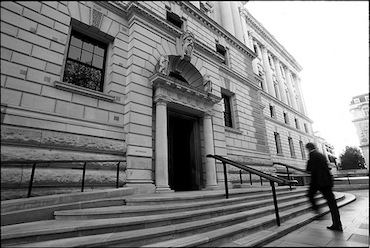A Financial Planning expert says the Autumn Statement will further dampen interest in buy to let among investors looking to use their pension savings.
The Treasury announced yesterday that higher rates of Stamp Duty Land Tax will be charged on purchases of additional residential properties, such as buy to let properties and second homes, with effect from 1 April 2016.
Rachael Griffin, a Chartered Financial Planner and head of the life, investment & pensions technical team, at Old Mutual Wealth, said: “The announcement will further dampen interest in buy to let and those considering their long-term savings option away from the property market should think about their other tax allowances such as Isas and pensions.”
Ms Griffin, who used to be head of Financial Planning at Skandia, said: ““Prior to the introduction of pension freedom reforms in April this year there was significant speculation about a boom in buy to let investing from the over-55s. Our own research suggests that in fact only 7% of those approaching retirement are eyeing buy to let income to fund their retirement, down from 11% in 2014.”
She said: “The Government expects to pocket £880m a year from this measure by 2020-21, making it another major blow for buy-to-let investors following the curb on mortgage interest tax relief announced in the summer.
“Many landlords are already concerned that the margins on buy to let investment are being squeezed and for some this may be the final nail in the coffin.”
The Chancellor is aiming to reduce the number of buy to let investors coming to market, enabling first time buyers to take their place, according to accountancy firm, Wilkins Kennedy, which said it could have a different short term effect to that which was intended.
Matthew Hall, who is head of tax and partner at top-20 accountancy firm, Wilkins Kennedy, said: “Those who have been considering investing in property could now decide to accelerate their plans following today’s announcement. This could mean that it will have the opposite effect over the next few months until April 2016 as investors flood the market as opposed to first time buyers and driving up house prices in the process.
“Earlier in the year, Osborne announced the reduction of tax relief on mortgage interest payments and made changes to the Wear and Tear allowance. Now landlords are facing a higher Stamp Duty, so we could see either higher rents or reduced rental supply in the longer term.
“It will be interesting to see how the housing market changes between now and April, whether we will see a little bit of heat and how house prices are affected as a result.”
The Treasury report stated: “The higher rates will be 3 percentage points above the current SDLT rates. The government will use some of the additional tax collected to provide £60 million for communities in England where the impact of second homes is particularly acute. The tax receipts will help towards doubling the affordable housing budget. This will help first time buyers.”

